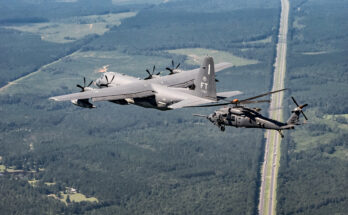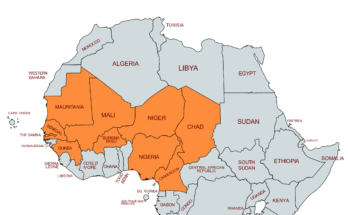The launch of Russia’s military invasion of Ukraine on February 24, 2022, represents a test for Europe.
Will the comfortable, economically developed countries that formed the backbone of the European Union by 1995 question their long-standing assumptions regarding security and geopolitical power dynamics?
Or will mouthing pieties and verbal commitments to rebuild and strengthen national militaries peter out if the conflict in Ukraine results – however unlikely – in a negotiated settlement and ceasefire in the coming months or year?
What appears to have resulted in a shift in the European mindset in the wake of the Russian invasion may mark a new era in the broader European defense environment.
Unquestionably, it has shocked European political leaders, awakening them from their decades-long post-Cold War slumber.
Within the span of two weeks, we have witnessed the leaders of Finland discuss – seriously discuss – the idea of their country joining the NATO Alliance.
Finland’s Nordic partner in security, Sweden, may appear a tad bit cooler on NATO membership, but nonetheless aims to bring its defense spending levels up to the NATO minimum requirement of 2 percent of annual GDP “as soon as possible.” This follows earlier steps by Sweden’s leadership to rebuild its civil defense capability and invest more in the military.
Also pledging more money for defense spending are countries ranging from Denmark, to France, to Poland, to Romania, and others.
Then there is the most surprising dual EU-NATO member state of them all: Germany.
In a moment that represented a sea change in German politics, Chancellor Olaf Scholz outlined in a special session of the Bundestag on February 27 steps that, if undertaken in full, would turn Germany’s post-reunification approach on its head. These include a special defense fund of EUR100 billion, an actual commitment to bringing Germany’s defense budget up – not only to the NATO 2 percent standard, but above that level – and a relaxation of long-standing export controls of weaponry to a conflict zone in order to help Ukraine in its struggle.
Whatever hesitancy to follow suit remains in some Western European capitals, an earnest debate will at least unfold. This in and of itself would represent a marked contrast from past years when budgetary clashes over more investment in guns or butter always came down in favor of the latter.
❗️#NATO urged all European allies to increase their defense budgets, #Stoltenberg said.
"The events in #Ukraine should not turn into a #war between NATO and #Russia, it will lead to more casualties". pic.twitter.com/z7YHoWcWSY— NEXTA (@nexta_tv) March 11, 2022
The irony of this moment is that the strategic mindset of “Old Europe” countries is beginning to align with those of “New Europe” (those nations yoked to the former Soviet Union during the Cold War) after years and years of dismissing their worries about Vladimir Putin’s Russia.
Never mind cyberattacks on Estonian government servers, or Russia’s invasion of Georgia, its Crimean peninsula takeover and absorption, or Moscow’s support for ethnic Russian separatists in the Donbas. Such things were a concern for those non-NATO/EU former Soviet republics nestled along Russia’s border like Armenia, Georgia, Moldova, and yes, Ukraine.
It was not a concern for those tethered to a postmodernist assumption that shooting wars on European soil were a thing of the past. That idea was considered simply unthinkable in respectable quarters.
Hence the shock in Berlin when Russian forces crossed into Ukraine and rocket and missile attacks resulted in civilian casualties.
Now comes the hard part for Germany and others: following through on their newfound defense-strengthening commitments.
Observers of the European defense environment have heard such verbal commitments before.
And yet here we are today, with NATO partners who have plenty of highly capable combat aircraft and world-class submarines, but insufficient personnel capacity, mechanized armored capability, airborne force multipliers, and logistical tail.
Some European armies in their current state would struggle to conduct an intensive combat operation beyond 60 days.
The positive is that rebuilding Europe’s defense capability is already in motion, however halting and at times insufficient it has appeared (particularly to former U.S. President Donald Trump).
Since 2014, there has been a steady rise in collective European defense spending, which remained uninterrupted despite the economic disruption caused by the outbreak of the COVID-19 pandemic.
This is important to note, as past European commitments to strengthen militaries and invest more in defense immediately fell by the wayside once the first sign of economic hiccups emerged. Whether in the late 1990s, following 9/11, or the global financial crisis of 2008-09 and the subsequent sovereign debt crisis, without fail, such events resulted in downsizing national armies, pruning capabilities, and slashing defense budgets.
Yet despite this steady years-long effort, many countries only began returning to pre-2009 baseline spending levels around 2019-2020. Meaning that the roughly decade-long trough in defense funding will take years to recover from.
The reality for much of Europe is that delivering on promises regarding force structures and capabilities will require time and unflinching commitment.
Are European governments really ready for the long-haul efforts required of them? Once the current shock over Putin’s Ukrainian invasion eventually wears off, is the requisite political will going to hold firm or falter? What happens if high levels of public debt lead politicians to forego fresh borrowing and levy more taxes to cover the cost of greater defense outlays? Or should other areas of government spending be cut in order to backfill military budgets?
We shall see. The follow-through is always the hardest part.
Dan Darling is Forecast International’s director of military and defense markets. In this role, Dan oversees a team of analysts tasked with covering everything from budgeting to weapons systems to defense electronics and military aerospace. Additionally, for over 17 years Dan has, at various times, authored the International Military Markets reports for Europe, Eurasia, the Middle East and the Asia-Pacific region.
Dan's work has been cited in Defense News, Real Clear Defense, Asian Military Review, Al Jazeera, and Financial Express, among others, and he has also contributed commentary to The Diplomat, The National Interest and World Politics Review. He has been quoted in Arabian Business, the Financial Times, Flight International, The New York Times, Bloomberg and National Defense Magazine.
In addition, Dan has made guest appearances on the online radio show Midrats and on The Media Line, as well as The Red Line Podcast, plus media appearances on France 24 and World Is One News (WION).




